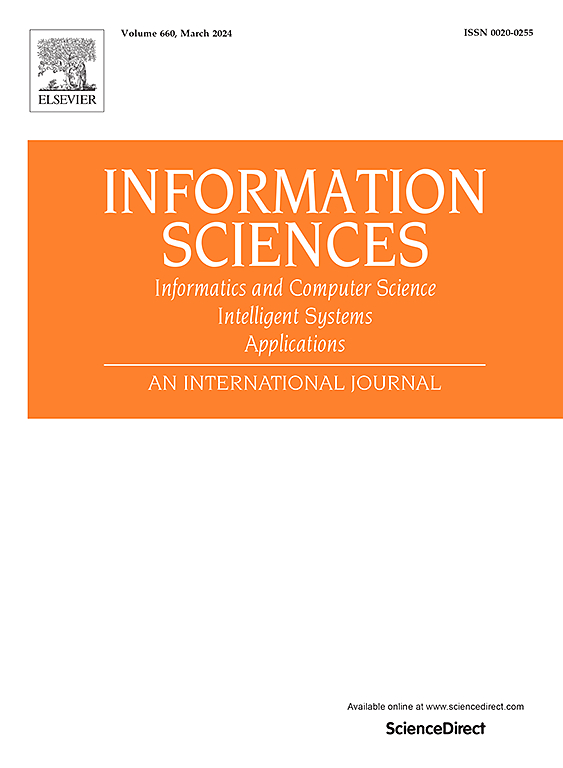高炉多变量故障鲁棒时域检测方法:鲁棒时域卷积检测网络
IF 8.1
1区 计算机科学
0 COMPUTER SCIENCE, INFORMATION SYSTEMS
引用次数: 0
摘要
高炉炼铁是一个复杂的工业过程,由于原料、变量设定值、反应条件等因素的变化,高炉炼铁过程经常出现故障。然而,由于BFIP的非线性、动态性以及正异常和异常异常的混合特性,现有的方法在实际应用中往往遇到困难。为此,本文提出了一种用于BFIP故障检测的鲁棒时域卷积检测网络(RTCDN)。基本的TCDN网络是通过叠加时间卷积网络(TCN)的残差块来构建的。残差块由一维扩展因果卷积组成,该卷积在变量的时间尺度上进行,使网络具有提取时间尺度信息的能力。由于TCDN由卷积网络组成,与rnn类型的方法相比,它平衡了时间信息的提取和速度。在此基础上,提出了克服异常异常点干扰的鲁棒解。鲁棒性解决方案利用TCDN不能重构异常异常点的特点,将训练数据集分解为干净部分和异常异常点。本文还改进了稀疏离群矩阵优化的近端方法,实现了异常离群的完全分离。最后,将TCDN应用于3个BF故障数据集,取得了比传统时间检测方法更好的检测效果。RTCDN也被证明具有良好的离群值分离能力,在异常离群值比例小于20%时仍能保持令人满意的检测性能。本文章由计算机程序翻译,如有差异,请以英文原文为准。
A robust temporal multivariable fault detection method for blast furnace: Robust temporal convolution detection network
As a complex industrial process, the blast furnace ironmaking process (BFIP) often suffers from faults due to changes in raw materials, variables’ setpoints, reaction conditions, etc. However, because of the nonlinearity, dynamics, and mixture of normal and abnormal outliers in BFIP, the existing methods always meet difficulties in practical application. Therefore, this paper proposes a robust temporal convolution detection network (RTCDN) for BFIP fault detection. The basic TCDN network is constructed by stacking the residual blocks of the temporal convolution network (TCN). The residual block consists of the 1-D dilated causal convolution, which is performed on the time scale of variables, giving the network the ability to extract time-scale information. Since TCDN consists of convolutional networks, it balances the extraction of temporal information and speed compared to RNN-type methods. Furthermore, a robust solution is proposed to overcome the interference of abnormal outliers. The robust solution exploits that TCDN can’t reconstruct abnormal outliers and decomposes the training dataset into the clean part and abnormal outliers. In this work, the proximal approach to optimizing the sparse outlier matrix is also improved to achieve complete separation of abnormal outliers. Finally, TCDN is applied to three BF fault datasets and performs better than the conventional temporal detection methods. RTCDN has also been proven to have good outlier separation capability, maintaining satisfactory detection performance when the proportion of abnormal outliers is less than 20%.
求助全文
通过发布文献求助,成功后即可免费获取论文全文。
去求助
来源期刊

Information Sciences
工程技术-计算机:信息系统
CiteScore
14.00
自引率
17.30%
发文量
1322
审稿时长
10.4 months
期刊介绍:
Informatics and Computer Science Intelligent Systems Applications is an esteemed international journal that focuses on publishing original and creative research findings in the field of information sciences. We also feature a limited number of timely tutorial and surveying contributions.
Our journal aims to cater to a diverse audience, including researchers, developers, managers, strategic planners, graduate students, and anyone interested in staying up-to-date with cutting-edge research in information science, knowledge engineering, and intelligent systems. While readers are expected to share a common interest in information science, they come from varying backgrounds such as engineering, mathematics, statistics, physics, computer science, cell biology, molecular biology, management science, cognitive science, neurobiology, behavioral sciences, and biochemistry.
 求助内容:
求助内容: 应助结果提醒方式:
应助结果提醒方式:


